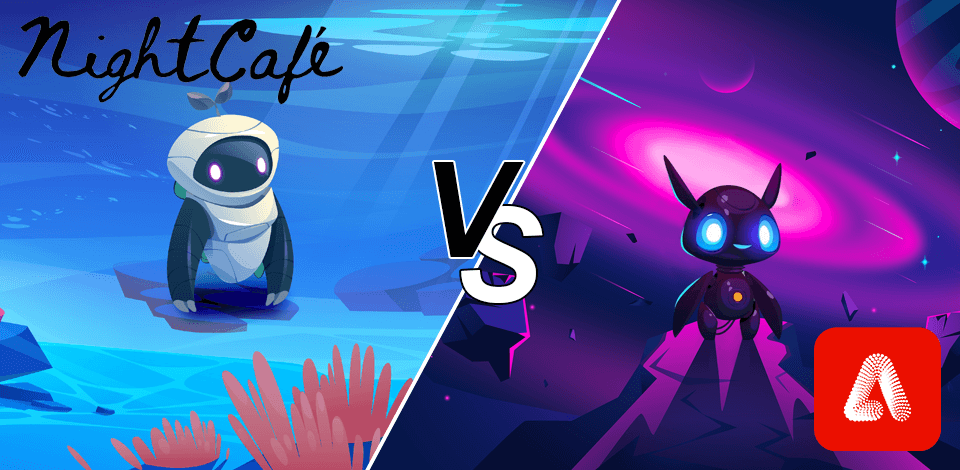
AI visuals are now essential to my FixThePhoto workflow. I take advantage of them when creating my blogs to accelerate illustration, photo edits, and video asset production while sparking fresh ideas.
Adobe Firefly has become an indispensable tool for my job. Its integration with Adobe apps allows me to create high-quality AI visuals right within my toolkit. The recent update made it even more convenient by making it a standalone app. And since Adobe trained it ethically, I never worry about copyright issues for client work.
My coworker loves NightCafe for its creative AI tools and fun community. Thanks to its special AI algorithms and tons of tweaking options, NightCafe has become a serious contender. Now we're constantly arguing at work: Firefly vs NightCafe - which one wins?
Naturally curious about new tech, I decided to evaluate the performance of both AI platforms myself. After several weeks of hands-on testing with Firefly and NightCafe, I compared their functionality based on four key areas: user experience, image quality, customization depth, and cost-effectiveness.
Adobe Firefly is the best choice for most creators. It makes great images, vectors, and videos you can safely use for work. If you want a powerful yet easy-to-use AI tool that won't cause legal issues, Firefly is perfect.
|
|

Adobe Firefly |

NightCafe |
|
Key features |
|
|
|
Best for |
Experienced designers, illustrators, Adobe users, businesses
|
Artists, hobbyists, experimental AI creators, NFT makers |
|
Pricing
|
Free tier with limitations, from $4.99/mo |
Free tier + paid credits |
|
Pros |
✔️ Adobe integration |
✔️ Simplified interface
|
|
Cons
|
❌ Limited free usage |
❌ Not so versatile |
|
AI models |
Proprietary |
Open-source models |
|
Image formats |
PNG, JPG, PSD |
PNG, JPG |
|
Video generation |
✔️
|
❌
|
|
Vector generation |
✔️
|
❌
|
|
Platform
|
Web, integrated into PS & Illustrator |
Web, Android (limited) |
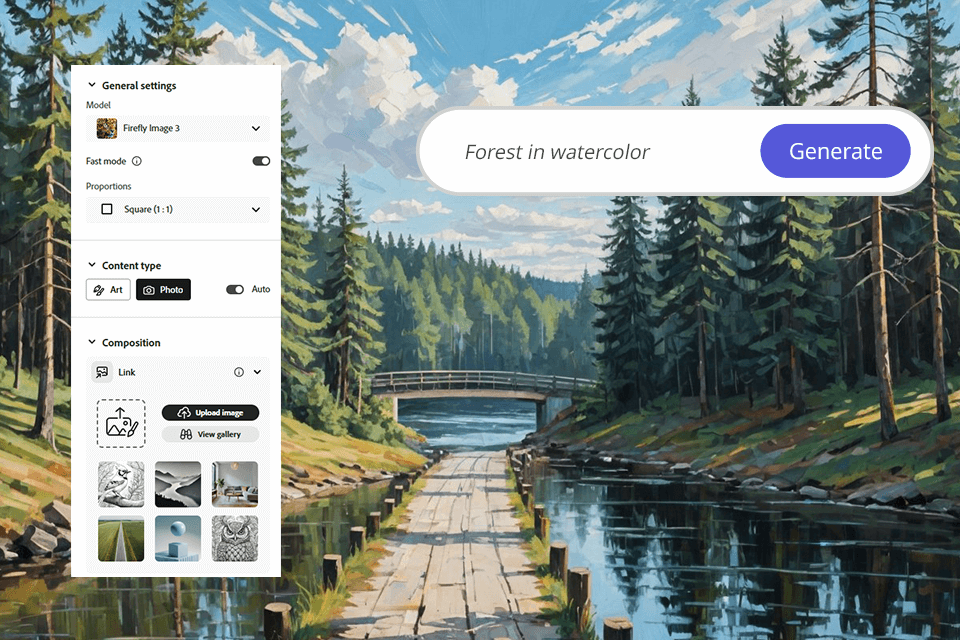
I use Firefly in Photoshop and Illustrator every day. It works perfectly with these programs, eliminating the need to jump from tab to tab or move files around constantly. It looks and feels just like other Adobe tools, so you'll know how to use it right away.
Even the standalone Firefly app keeps things simple. The layout stays clean and easy to use, with every option where you'd expect it to be. Undoubtedly, the highlight is the live preview that lets you see changes instantly. Now you don’t need to wait for new image generations every time you adjust something.
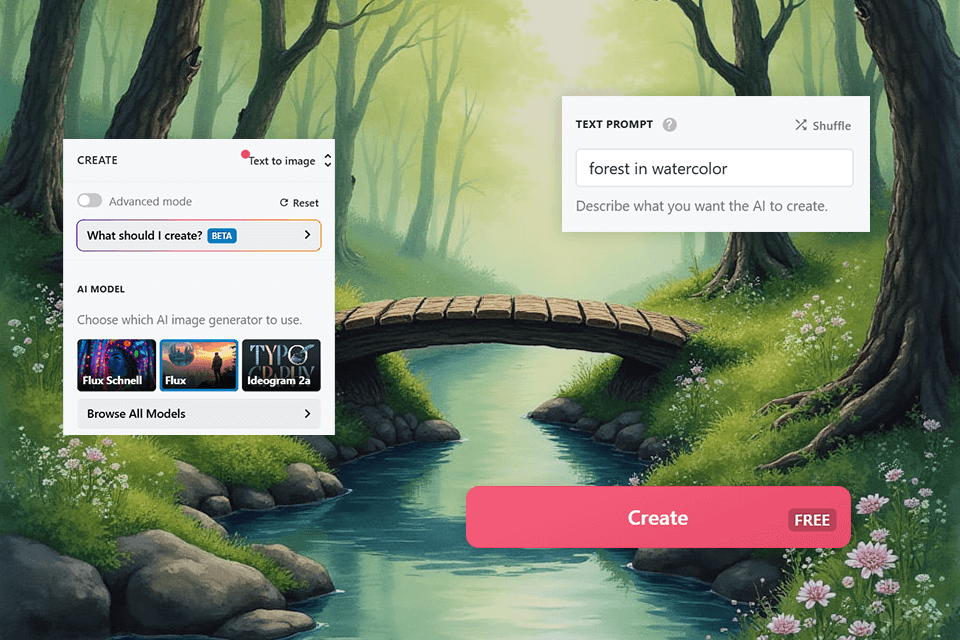
NightCafe offers a lively, community-focused interface that makes creating AI art feel like a game. You can earn credits by engaging with others, and there’s even a leaderboard to track progress.
While the range of AI models is impressive, switching between them can be a bit tricky and takes some time to get used to. The fully-featured interface can feel a little overwhelming. It takes some trial and error to figure out the best settings for different art styles.
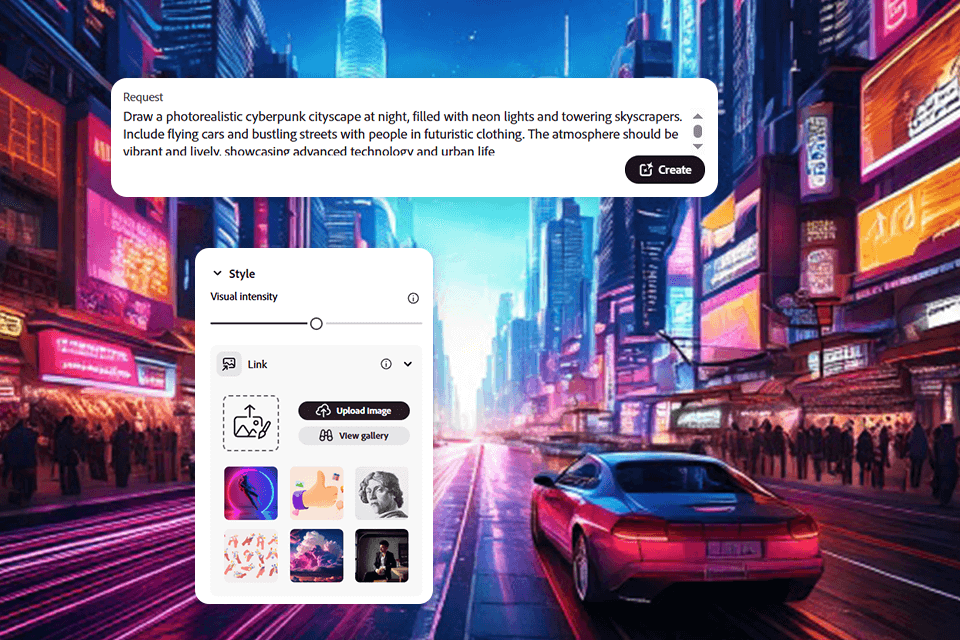
What I really like about Adobe Firefly is how clean and professional the results look right from the start. It uses properly licensed images, so I don't get weird-looking results. The “Text to Image” tool is my favorite - it's great for quickly making concept art, mood boards, and pieces I can use in Photoshop projects.
What impressed me first was how well Firefly understands descriptions. When I explain a scene carefully, it creates pics that actually match what I imagined, not just rough sketches. But customization options are where Firely shines. I love being able to adjust:
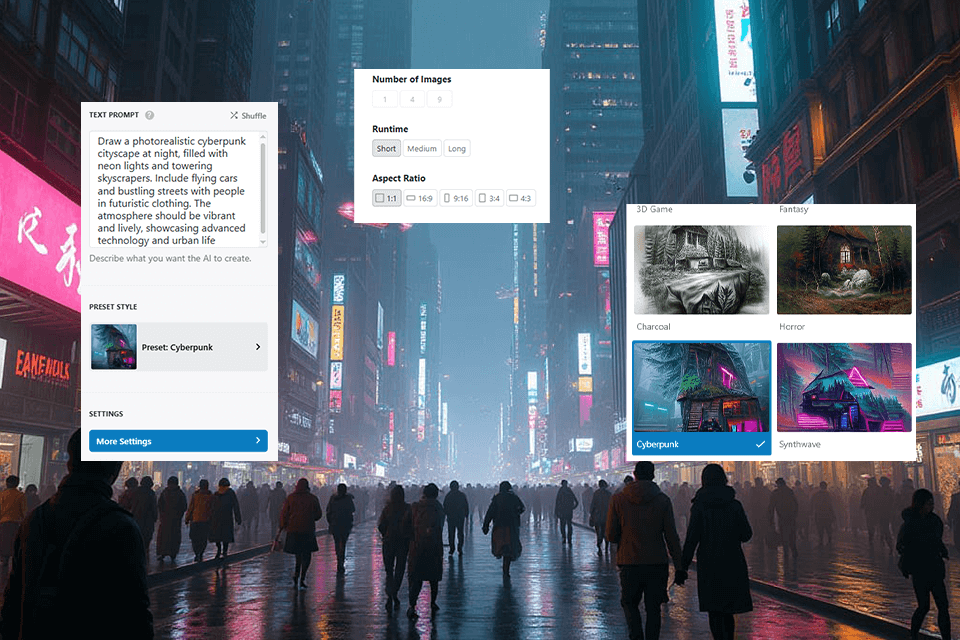
NightCafe is a better solution for those who like experimenting. While this AI image generator occasionally produces stunning results full of detail, other outputs require significant editing to meet professional standards.
NightCafe's evolution feature is great for creative experiments, allowing me to fine-tune images gradually and mix old versions. For example, I developed a series of AI-generated cyberpunk cityscapes. However, its results aren't as precise or reliable as Firefly's, making it less suitable for professional client work.
NightCafe offers a diverse range of AI models, each excelling in different styles, but its customization tools can feel overwhelming. While you can adjust settings like:
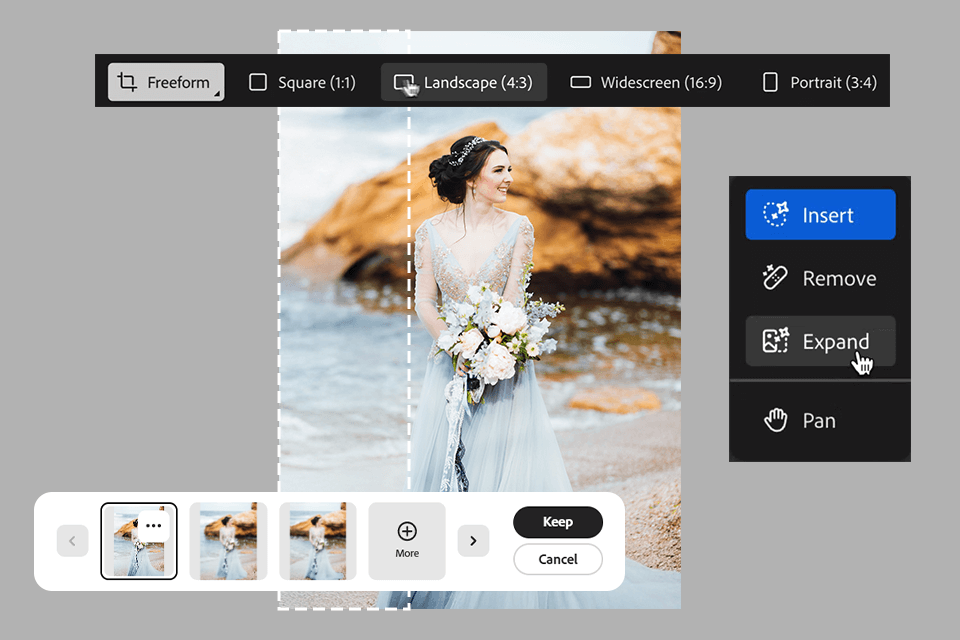
Adobe Firefly is one of the best AI photo editors for me. Because I use other Adobe apps, tools like Generative Fill and Expand fit right into my workflow and have made editing much faster and easier.
Once, a wedding photo I was editing had the bride's dress cut off. Normally, I'd spend hours fixing it in Photoshop. But with Firefly's Generative Expand, it took seconds: the AI added the missing dress perfectly, matching the folds and lighting. Even the client thought it was real!
Firefly's Generative Fill is a game-changer. It effortlessly removes unwanted objects, replaces backgrounds, or adds new elements - all while keeping the original details sharp. For example, I fixed a messy product photo in minutes instead of reshooting it, and the result looked professional.
NightCafe excels at creating AI art but falls short when it comes to editing. Unlike Firefly, NightCafe lacks non-destructive editing tools. To tweak an image, I either have to regenerate it from scratch or edit it separately in another app.
Comparing NightCafe vs Adobe Firely, it becomes clear that the first option works best for artistic exploration, not precision editing.

Firefly's deep integration with After Effects and Premiere Pro revolutionized video workflows, enabling editing through text, automatically widening shots, and creating AI video effects.
Firefly video AI tools include an incredible clip-extension feature. Recently, I had a promo video with a shot that ended too soon. Rather than scheduling a reshoot, I used the Generative Extend feature, which added perfectly matching frames with realistic lighting and movement.
Firefly's AI color tools are game-changers. When I had to blend footage from two different cameras, its automatic color matching aligned them perfectly, saving me hours of painstaking correction work.
Firefly's Image to Video brings still pictures to life, turning photos or drawings into moving scenes with realistic depth and lighting changes. Text to Video lets you create videos just by typing descriptions. You can control the camera movement, angles, and more, opening up endless creative options.
NightCafe only creates still AI images. To animate them, I’d need to export the artwork and manually add movement in After Effects.
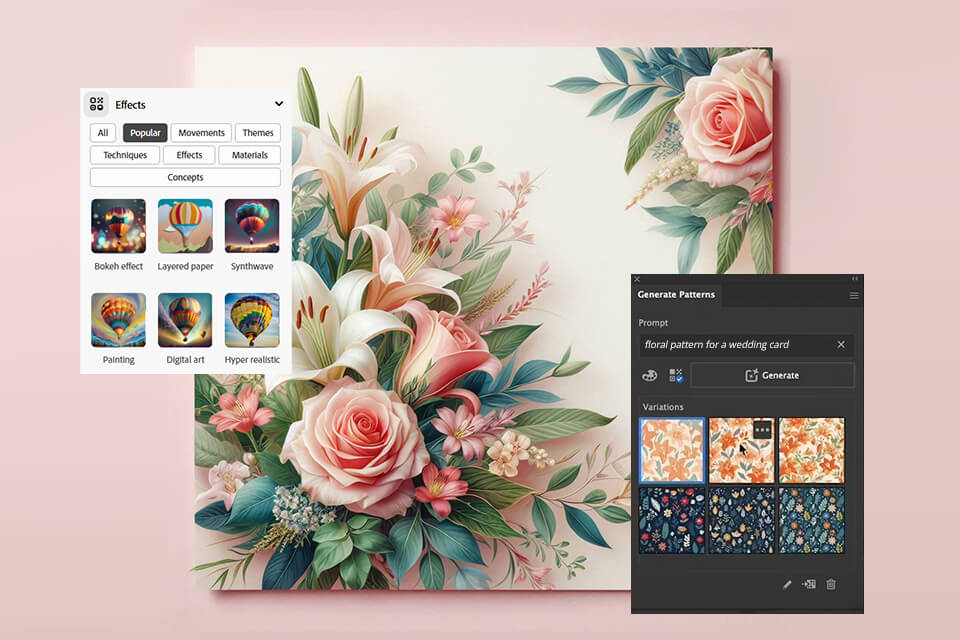
With Firefly built into Illustrator, you can now create editable, high-quality vector graphics just by typing a text prompt.
When I was designing a wedding invitation, I needed an elegant floral pattern. Instead of drawing it all by hand, I used an AI pattern generator. I just typed in my idea, and seconds later, I had a high-resolution vector design with crisp edges and smooth curves, ready to customize.
One feature I absolutely love is Firefly's Generative Recolor. Regularly working on brand identities, I spend hours manually adjusting color schemes. Now I can test different palettes on vector artwork in seconds - the colors change instantly while keeping all the design elements perfectly intact.
NightCafe only creates raster images, not vectors. So, if I need a scalable design, I’d have to manually trace it in Illustrator or Inkscape, which just adds extra work.
Adobe Firefly uses custom AI technology that's been trained only on properly licensed images from Adobe Stock and other legal sources. Unlike other AI art tools, this AI art generator can actually grasp artistic details like lighting, angles, and style, giving you more reliable, professional-looking results every time.
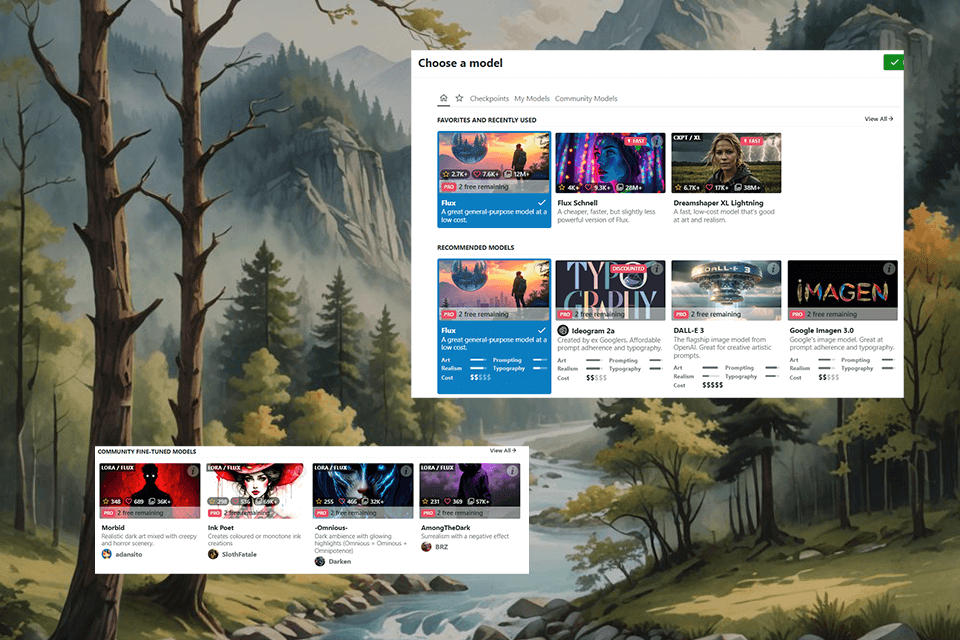
Unlike Adobe Firefly, NightCafe relies on various open-source AI models to generate its artwork.
Comparing NightCafe vs Adobe Firely, the former doesn’t always deliver consistent results, largely because it depends on external AI models. I sometimes have to try several times before getting an image that meets my expectations. The use of public training data also means unexpected glitches or unusual details can show up in the final output.
Because I work extensively in Photoshop, Illustrator, and Premiere Pro, Firefly’s seamless integration with Adobe Creative Cloud is a huge benefit:
In contrast, NightCafe is a standalone web tool. You can download your images, but they don’t connect directly to design apps like Photoshop or Illustrator. Every creation comes out as a flat image file - no PSDs, no vectors, and no AI-powered tweaks for editing elsewhere. You’ll always have to import and adjust things manually.
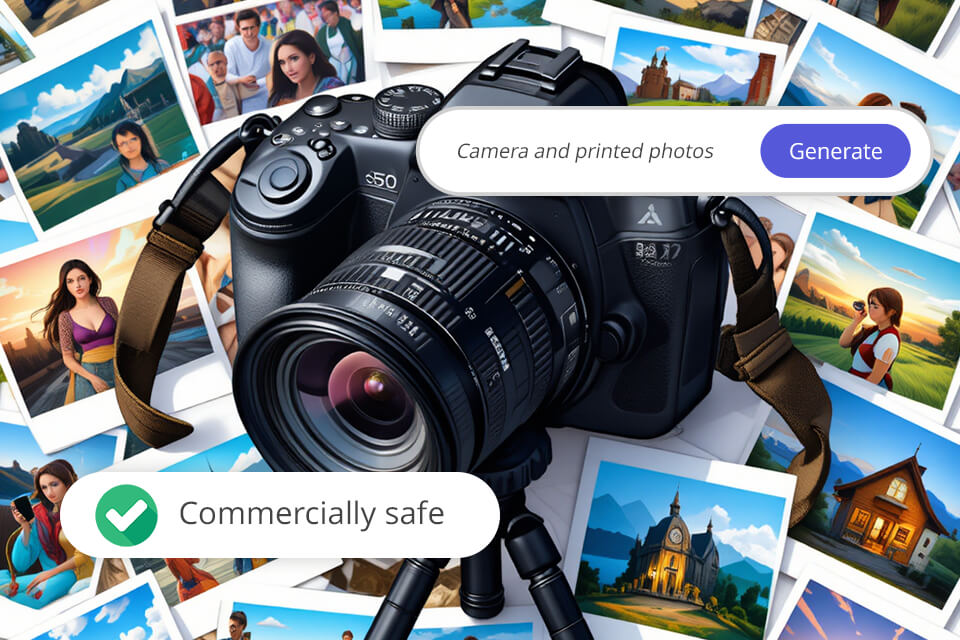
I rely on Adobe Firefly because it uses properly licensed training data. That means every design I create (whether it's a logo, ad, or illustration) can be safely used for commercial purposes. No copyright headaches, no legal risks.
Adobe makes it easy to know where AI-generated content comes from by offering content credentials, which help build trust. Firefly is also working with governments and industry experts to create clear rules for using AI in design. As part of the Content Authenticity Initiative (CAI), Adobe is helping promote the safe and responsible use of AI, making it the most reliable AI tool for designers.
NightCafe’s open-source AI models are trained on public internet data, and that’s the problem. Since these models may pull unverified (or even copyrighted) images, there's no way to guarantee your generated art is truly original. Another drawback, NightCafe puts full legal responsibility on users. This means that if your AI-created work causes you copyright trouble, you're on your own.
AI-generated images often come with subtle watermarks or resemble the style of well-known artists, which raises concerns about both ethics and copyright. Now my rule is simple: anything from NightCafe gets completely remade in Photoshop first. It's extra work, but cheaper than a lawsuit.
Adobe Firefly is included with Creative Cloud subscriptions, so if you’re already using Photoshop or Illustrator, you can access its AI features without paying extra. However, it works on a credit system: each month, you get a limited number of free AI generations. Once you hit your limit, you'll need to wait for the monthly refresh or upgrade for additional credits.
Here’s how it works:
Comparing Adobe Firely vs NightCafe, the latest works like a prepaid service: you buy credits, spend them on creations, and purchase more when needed.
What I appreciate about NightCafe is its pay-as-you-go approach - you only spend credits on what you create. However, if you're aiming for high-resolution images, private outputs, or access to advanced AI models, your credits can disappear fast, making it a pricey option.
AI art is everywhere now, but much of it ends up looking pretty similar. After years of practice, I've learned how to break free from those predictable results and use AI to create artwork that's uniquely mine.

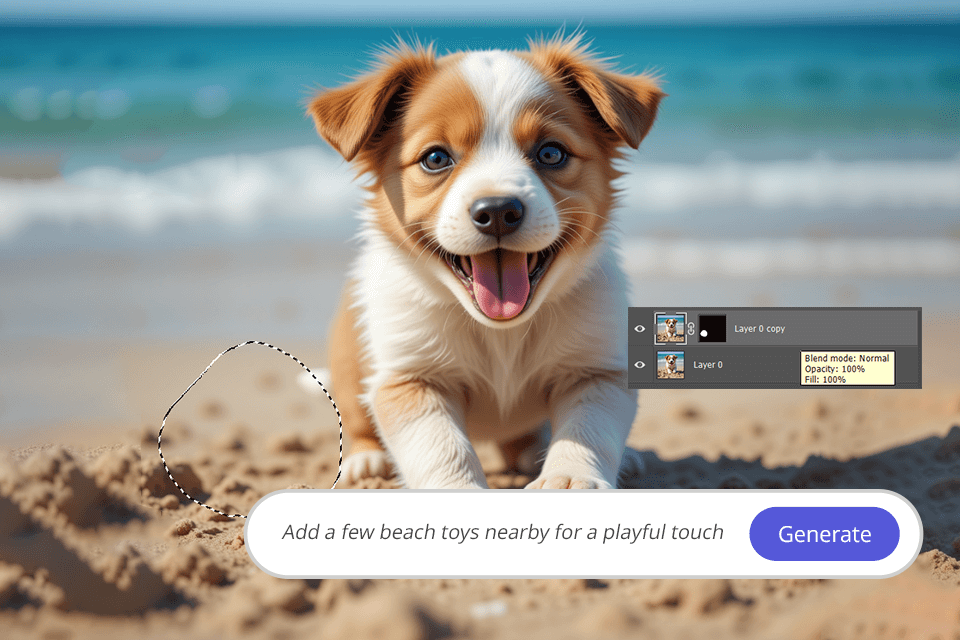
When testing Adobe Firefly and NightCafe, I was determined to find out which AI program is better suited for the wide-ranging needs of digital artists, designers, and content creators. To do this, I regularly use AI tools to create images, so I decided to examine how they perform in actual creative projects - from brainstorming ideas to producing polished, final visuals.
For a fair assessment, I didn't just rely on my own experiments. I gathered real-world insights by consulting with professional photo editors from the FixThePhoto team, fellow designers, photographers, and digital artists. I also spoke with clients actively using AI in their creative projects and analyzed discussions from Reddit and art communities.
I thoroughly evaluated each AI tool by focusing on four essential aspects: image quality, editing capabilities, workflow efficiency, and customization options:
Step 1. Evaluating AI image generation. At first, I provided identical text prompts for both Adobe Firefly and NightCafe to check how each tool would cope with the generation of different pics. Examples of prompts used included:
Step 2. Testing AI-assisted editing features. Next, I evaluated how easily users can refine AI-generated images. This involved:
Step 3. Measuring workflow efficiency. Since workflow speed is critical in production environments, I analyzed:
To test the consistency, I generated the same prompt multiple times, checking if the AI produced similar styles or random variations.
Step 4. Testing AI model customization & control. I completed my analysis by measuring how precisely users could fine-tune each AI's results, checking:
After testing Adobe Firefly and NightCafe and analyzing expert insights and users' experience, here's what I learned.
Firefly delivers professional-grade results that integrate seamlessly with Adobe workflows, while NightCafe shines for artistic experimentation, offering more playful creative freedom.
Each platform serves different purposes, so your ideal choice depends on whether you value commercial safety, diverse AI options, or creative flexibility.